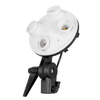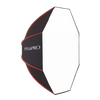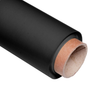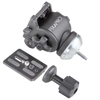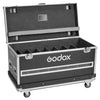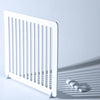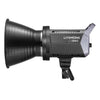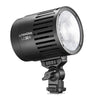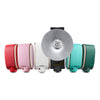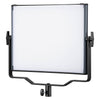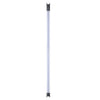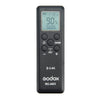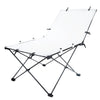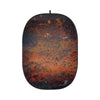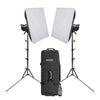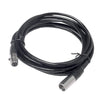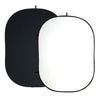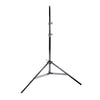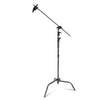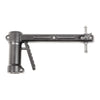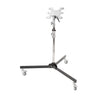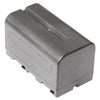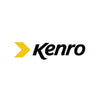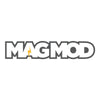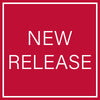Is Buying High-End Lighting Equipment Worth It?
Photography can be considered an expensive profession as it requires a significant initial investment in equipment such as cameras, lighting, and the overall setup. However, there are both low-budget and high-end options available in the market, and we're here to evaluate if there is any difference in the product offering based on the dent they put in your wallet.
The two primary lighting equipment include the actual light, whether it's studio flash or continuous, and modifiers that come in different forms, such as softboxes, umbrellas, and reflectors. Let's take a closer look at lighting essentials and their varying price points to determine if there is any noticeable deviation in the final product based on price.
Lighting
When purchasing lighting equipment, it is vital to consider the different types of light available, including studio flash, speedlites, tungsten lighting, fluorescent lighting, and LED lighting, all of which achieve different effects. Each light has its own set of pros and cons and price points depending on the quality of the equipment and longevity of use.
The PIXAPRO STORM III 1200 Flash Head does come with a premium price tag, but it makes up for it with a powerful flash that can produce 1200Ws of power. It has a flash duration of up to 1/25640 seconds and a recycling time that can go as low as 0.05 seconds due to the IGBT technology depending on the level of power discharge. This flash head provides different increments of power, and it can shoot multiple low-powered flashes in succession or high-powered shots. The light comes with automatic temperature-controlled ventilation that keeps the system cool and running smoothly. The flash is designed for optimum support for multiple shooting scenarios as it comes with features such as built-in flash receivers, the compatible One System, and standard mounting options. Another amazing pack and head system with incredible 2400Ws (CORE2400) due to launch soon.
 |
 |
The PIXAPRO LED S500D MKII Light is also a high-end option, but it comes with a range of features, including a 5600K daylight-balanced 500W COB LED chip in line with modern technology that produces a brightness of 45,000 lumens which is ideal for different shooting styles. The light has a CRI and a TCLI rating of 95, making it ideal for use in large-scale productions due to its enhanced colour accuracy. An effective built-in cooling fan is used to ensure the light does not overheat, allowing you to have longer shoots. The LED Light comes with additional preset lighting effects for different shooting situations, including paparazzi, TV, fireworks, etc. The light can be remotely controlled with a console, and it comes with multiple power options making it easier to use for location shooting while also having a universally compatible mounting system for light modifiers.

Light Modifiers
There are different types of light modifiers available for achieving a multitude of lighting effects, and they come at different price points depending on their size, dimensions, quality, and other factors. In terms of light quality, the modifier should evenly diffuse lighting throughout the duration of the shoot as the site heats up. Modifiers are also a solid investment as they are highly durable equipment that can be effectively used for years if properly maintained, and the cheapest modifier options might not provide you with the longevity of their slightly pricier counterparts. Another important feature to look out for when buying a light modifier is the ease of use when setting up the system, as it can have multiple parts that can be confusing during assembly.
With modifiers such as softboxes, the price points are typically dictated by the size of the equipment, such as the 170cm easy open softbox or 180x120cm full length softbox which are large softboxes with quick and painless assembling mechanisms which provide more control over full-length lighting; ideal for product photography (in still-life & product photography due to the linear catch light), half body or full length portrait or to be used as a background.
 |
 |
 |
PIXAPRO 70X100cm Softbox is specifically created to be used as a floor softbox. This light modifier also comes with a stable stand, and it uses high-quality diffusion material that produces a soft fill light that completely surrounds the subject.
Additionally, the softbox is easy to set up and use, making it great for location shooting, and it comes with a standard mounting attachment which adds to the level of convenience it provides.
Umbrellas are another form of light modifier that use reflection and diffusion to produce unique lighting results. The PIXAPRO 88" Parabolic Umbrella might come with a higher price tag, but it can be easily justified by considering the multi-purpose uses of the equipment. The umbrella is capable of providing two effects. The first being its ability to produce soft lighting through the translucent background as it is constructed with a white material. Secondly, it can also be used with the additional black and silver reflective covering to make the most out of your selected light source, diffusing the light without losing brightness. This lighting is suitable for indoor and outdoor shoots due to its multiple functionalities. It even provides different mounting options as it can be mounted horizontally and vertically to capture images at different angles. The umbrella is easy to set up, and it comes with a fiberglass frame supported by an aluminium shaft making it extremely durable for use in multiple shoots.

Other light shapers commonly used are those such as the Optical snoot, magnum reflector, zoom reflector etc.
 |
 |
 |
Quality light stands such as C stands, flamingo boom stands, gun handle stands or tube stands are also commonly used in commercial studio to provide extra support and protection to the lighting unit.
 |
 |
 |
 |
Handpainted backgrounds are also the new trend in high demand.

Final Thoughts
While there might be some benefits to purchasing higher-end equipment, the result is based on the skill of the photographer and their style. Premium lighting equipment can enhance any setup only if the photographer understands how the light reflects and produces shadows in order to manipulate light to produce unique effects in the final shot.



